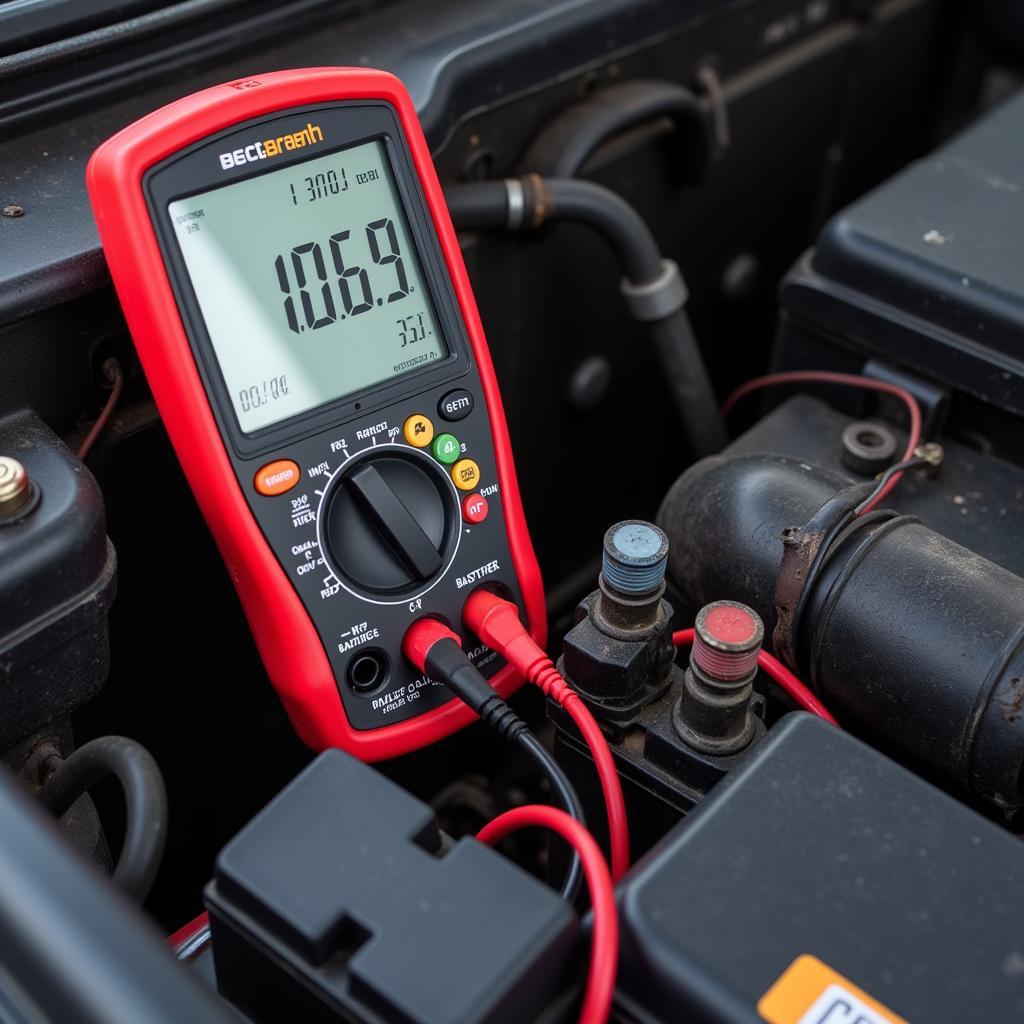A normal draw on a car battery is a crucial aspect of vehicle maintenance that often goes unnoticed until a problem arises. Understanding what constitutes a normal current draw can help you prevent unexpected battery drain and keep your car running smoothly. It also allows you to diagnose potential issues early on, saving you time, money, and frustration down the road. After reading this article, you’ll be able to identify and address battery drain problems confidently. normal draw on car battery
What is a Normal Battery Draw?
Simply put, the normal draw on a car battery refers to the amount of current consumed by electronic systems when the vehicle is off. This includes things like the clock, alarm system, radio memory, and even the computer modules that control various functions. A slightly elevated draw can indicate a minor issue, whereas a significantly high draw points towards a serious problem that needs immediate attention.
 Measuring Normal Draw on a Car Battery
Measuring Normal Draw on a Car Battery
How to Measure Normal Draw on a Car Battery
Knowing how to measure the normal draw on a car battery is essential for troubleshooting electrical issues. You’ll need a digital multimeter set to measure DC amps. First, disconnect the negative battery cable. Then, connect the multimeter in series between the negative battery terminal and the disconnected cable. Observe the reading on the multimeter. This is your car’s current draw.
Typical Current Draw Values
Typically, a normal amperage draw car battery should be between 25 and 50 milliamps. However, this can vary depending on the vehicle’s make, model, and the features it has. Anything above 50 milliamps is considered excessive and indicates a parasitic draw that needs to be investigated.
Identifying a Parasitic Draw: Common Culprits
A parasitic draw occurs when a component continues to consume power even when the car is off. This can be caused by a faulty relay, a stuck switch, or a malfunctioning electronic module. Common culprits include interior lights, the glove box light, the trunk light, and even faulty aftermarket accessories.
Troubleshooting a Parasitic Draw
Troubleshooting a parasitic draw involves systematically isolating and testing different circuits. This can be done by pulling fuses one at a time while observing the multimeter reading. When the current draw drops significantly after pulling a specific fuse, you’ve identified the circuit with the problem. testing for parasitic draw on car battery
Why is Understanding Normal Draw Important?
Understanding the normal current draw on car battery is crucial for maintaining its health and longevity. A consistently high draw can lead to premature battery failure, leaving you stranded. By knowing the normal range and being able to identify a parasitic draw, you can address these issues before they become major problems. normal amperage draw car battery
“A common misconception is that just because a car starts, the battery is fine,” says John Smith, a seasoned automotive electrical engineer at AutoElectric Solutions. “A slow but consistent parasitic draw can weaken the battery over time, leading to unexpected failures.”
The Impact of Modern Vehicle Technology on Battery Draw
Modern vehicles are packed with electronic features, increasing the normal draw on the car battery. This necessitates a higher awareness of battery health and the potential for parasitic draws. Understanding these changes is crucial for effective vehicle maintenance.
“Modern vehicles, with their advanced electronics, require a different approach to diagnostics than older models,” states Maria Garcia, an expert in automotive diagnostics at Advanced Auto Diagnostics. “Understanding the normal draw for your specific vehicle is the first step in preventing and addressing battery drain issues.” normal current draw on car battery
Conclusion
Understanding the normal draw on a car battery is a fundamental aspect of car ownership. By knowing how to measure the current draw and what constitutes a normal range, you can proactively identify and address potential issues, ensuring reliable starts and a healthy battery. passat battery drain
FAQ
- What tools do I need to measure the current draw on my car battery?
- How often should I check my car’s battery draw?
- What should I do if my car’s current draw is too high?
- Can a faulty alternator cause a parasitic draw?
- What are some common causes of a parasitic draw in older cars?
- How can I prevent a parasitic draw in my car?
- Is it safe to drive my car with a parasitic draw?
